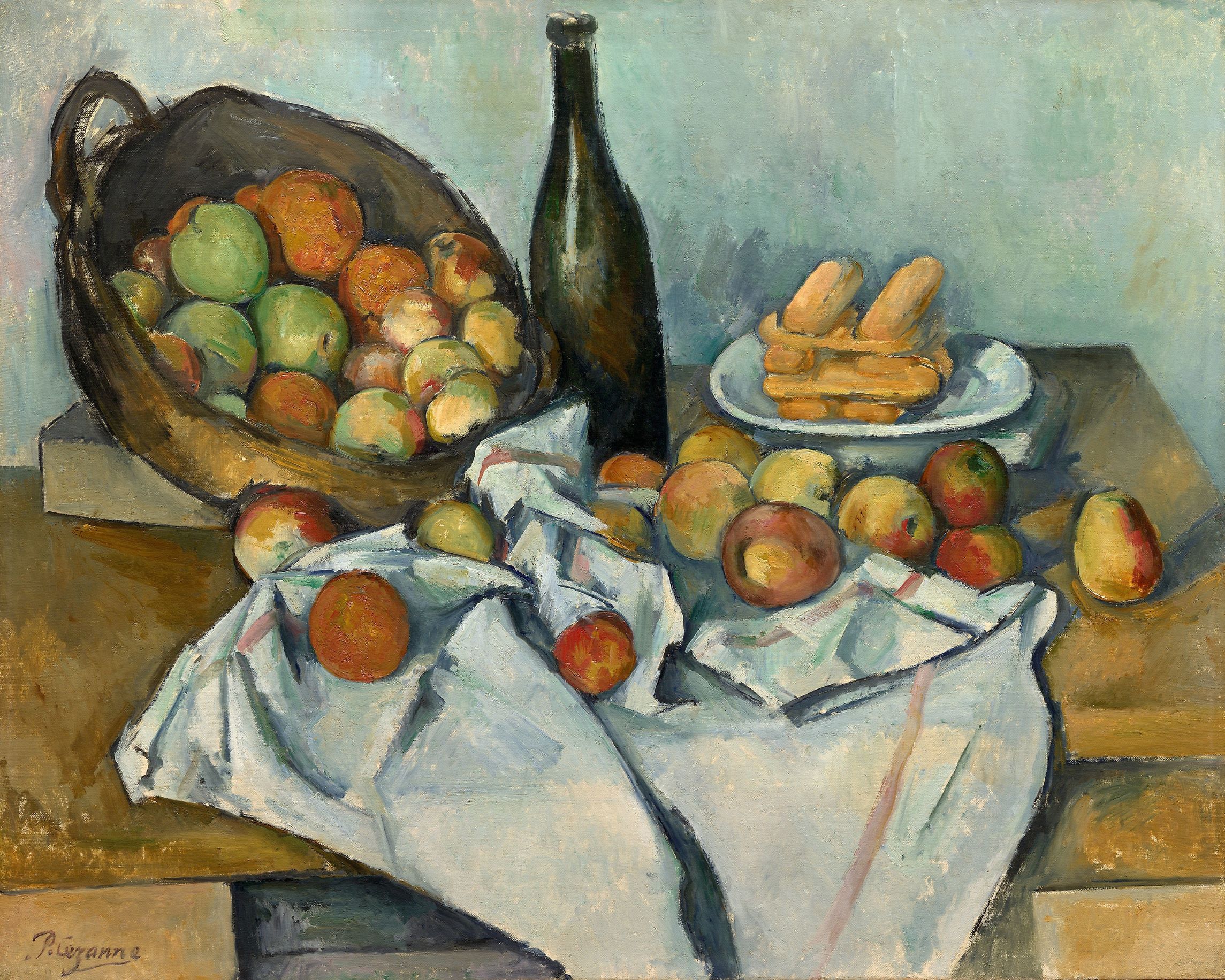
The BIG Pick
The Courtney’s of Whimple ‘Cider Orchard’ is open for one weekend in September. Apple picking, pressing, music and much more
Tell me moreCézanne and Apples

Paul Cézanne (1839-1906) is often credited as the artist who served as the transition from 19th century style painting to more radical 20th century styles. That is an incredibly sweeping statement with boatloads of nuance missing, but it serves as a good ta-da opener, so I’ll quote it anyway.
Cézanne is mainly credited with influencing early Cubism, invented by Picasso and Braque around 1906-07. Cézanne didn’t directly take part in this movement (he is not a Cubist), but the basic idea that Picasso masterfully built on was the concept of taking a three dimensional object or image and presenting it on a two dimensional plane, which Cézanne often explored in his later works.
As was the habit for most 19th century artists in Paris, Cézanne often visited the Salons and Galleries to study the Old Masters – as artists before 1800 were collectively known. Through studying the Old Masters, their subject matter and techniques, Cézanne created a bridge between the old and the new/yet to be invented. Cézanne took on traditional subject matter, traditional composition, and applied new techniques to these subjects.
Let’s look at Cézanne's ‘Basket of Apples’ (1893) as an example.
Paintings of still lives were popular in 17th century Northern Europe (mainly the Netherlands), where post-Reformation laws made it difficult for artists to paint religious scenes or scenes containing religious (Catholic) imagery. Still life subjects allowed artists to showcase their technique, perspective and artistic eye. The most important thing in 17th century still lives was verisimilitude: the painting’s audience should feel that they could reach into the painting and feel the texture of the petals of the flowers in a vase; feel the slipperiness of the fish on a slab; grab the apple from a bowl and take a bite.
When neo-classicism came into style in the 18th century and brought with it a fascination for Roman and Greek styles and interests, the still life was relegated to a lower art form (literally) and forgotten, in favour of now possible religious, historic or contemporary subject matter.
Because so few artists were interested in Still Life, this gave a ‘blank canvas’ for Cezanne and innovation.
Fine Art, since the 15th century in Italy (I’ve seen a lot of very compelling arguments for earlier dates, but can’t find my notes now, so am going with the general consensus) had been based on the use of single-point perspective – the idea that things get smaller the further away they are, eventually resulting in a vanishing point. This created depth, three-dimensionality, realism: all the things that artists had been chasing since the Romanesque period.
Verisimilitude was not Cezanne’s objective.
Cezanne took the concept of the still life, but painted the subject with disjointed perspective. Rather than viewing a static object at a single moment in time, Cezanne painted it as a human seeing the scene from multiple places at once in a single frame. This leads to some compositional anomalies: the angle of the bottle, the tilt of the basket, the fall of the shadows, the foreshortening of the tablecloth. They are painted from multiple perspectives at once and we can never quite be sure where the individual objects are in relation to one another.
Cezanne also experimented with stripping the scene back to the barest essentials to communicate the image. Red and green circles clearly portray apples, even without the exhaustive detail of, say, Caravaggio or Rembrandt. Through our own associations and knowledge of the composition, our brains fill in the basic information Cezanne has given us, to complete the image of a basket of apples spilling over the table.
Because of these changes in technique, Cezanne is called the Father of Modern Art. His flattening, multi-perspective experiment directly influenced Picasso and Braque in their creation of Cubism and catapulted 20th century fine art into a new dimension. His interest in stripping images back to their barest shapes and colour, devoid of projected context could be argued to have led to the Expressionist movement.
Cezanne and his little bowl of apples on a rainy day did quite a lot, really.








